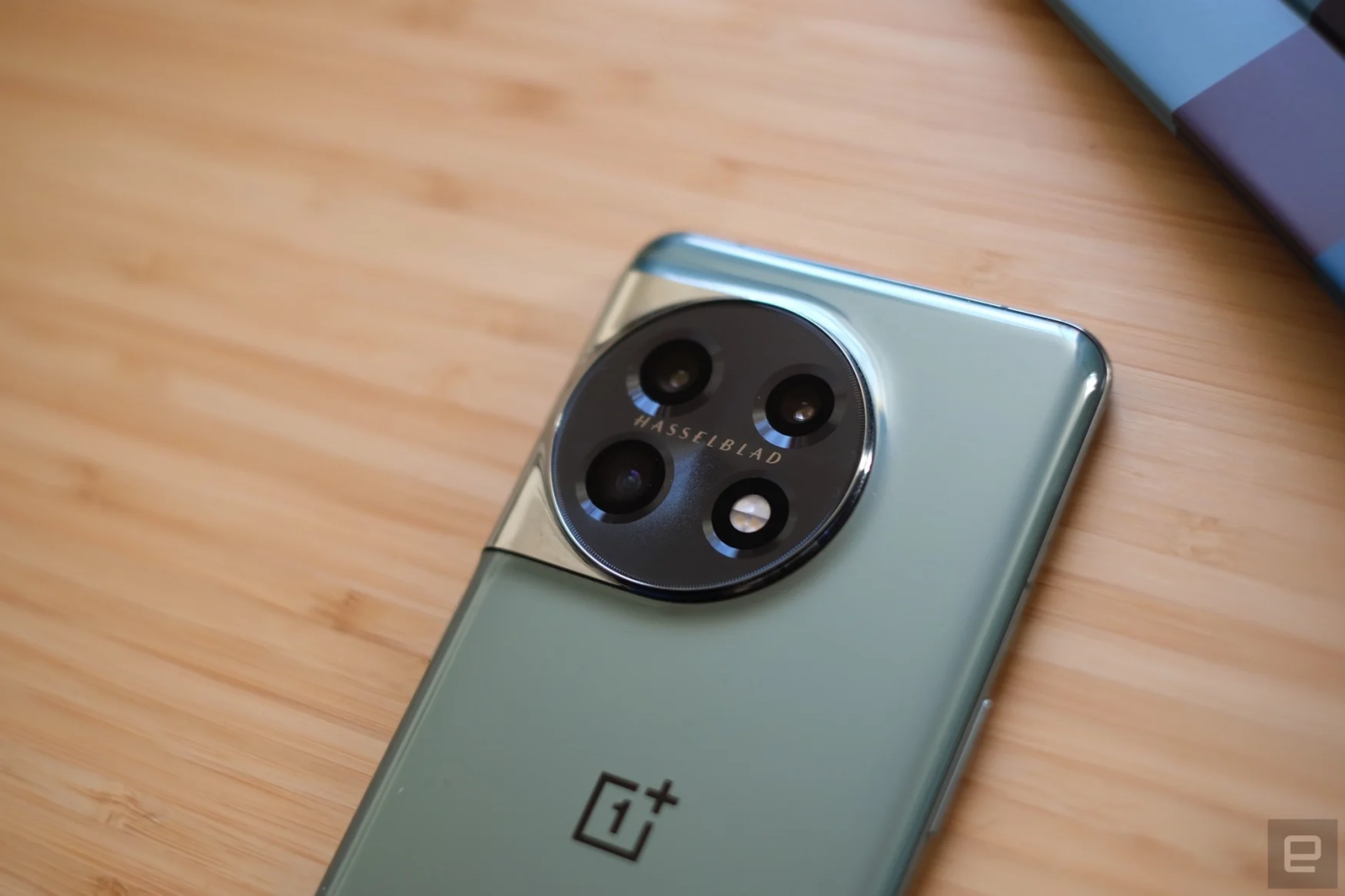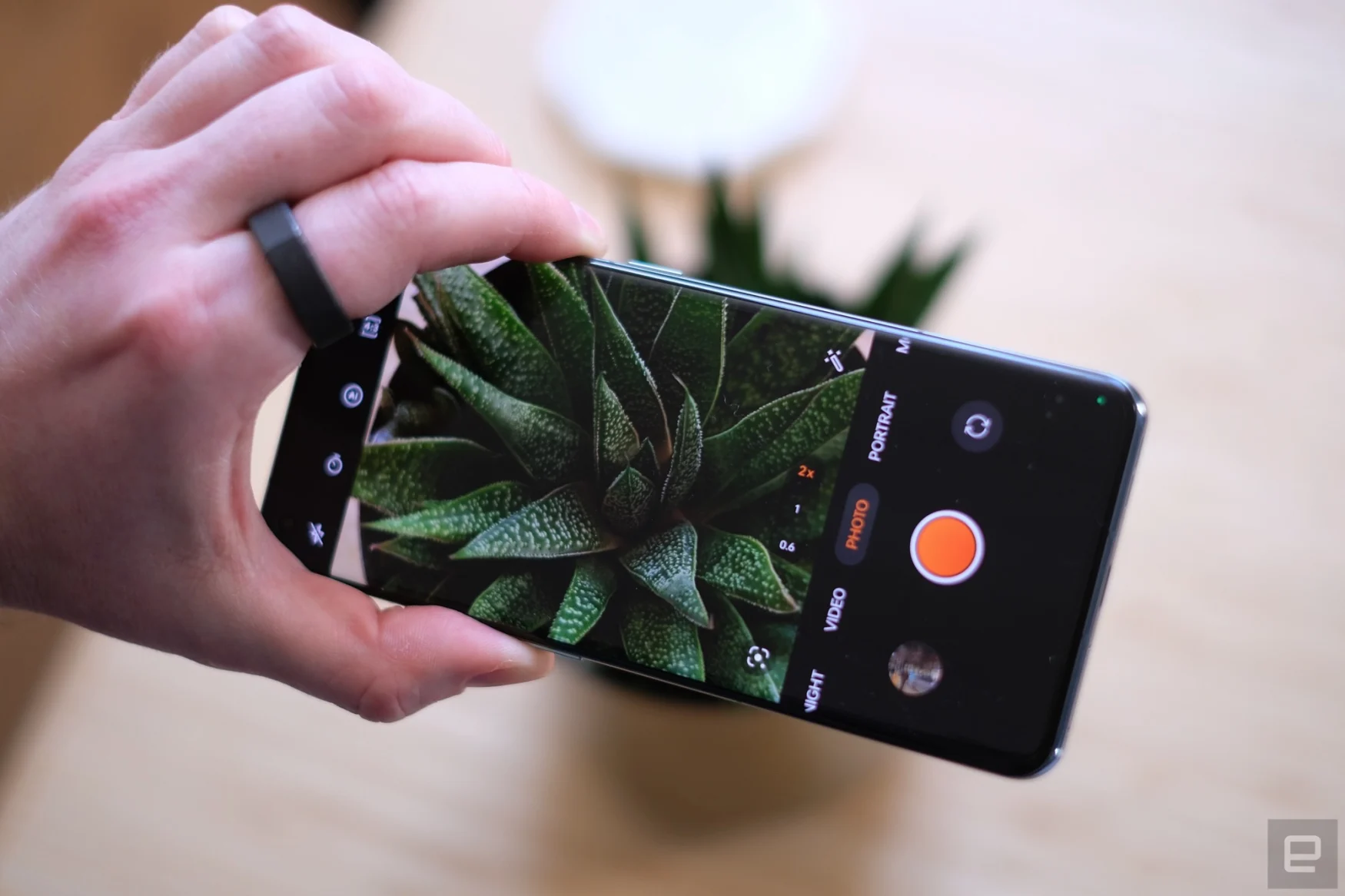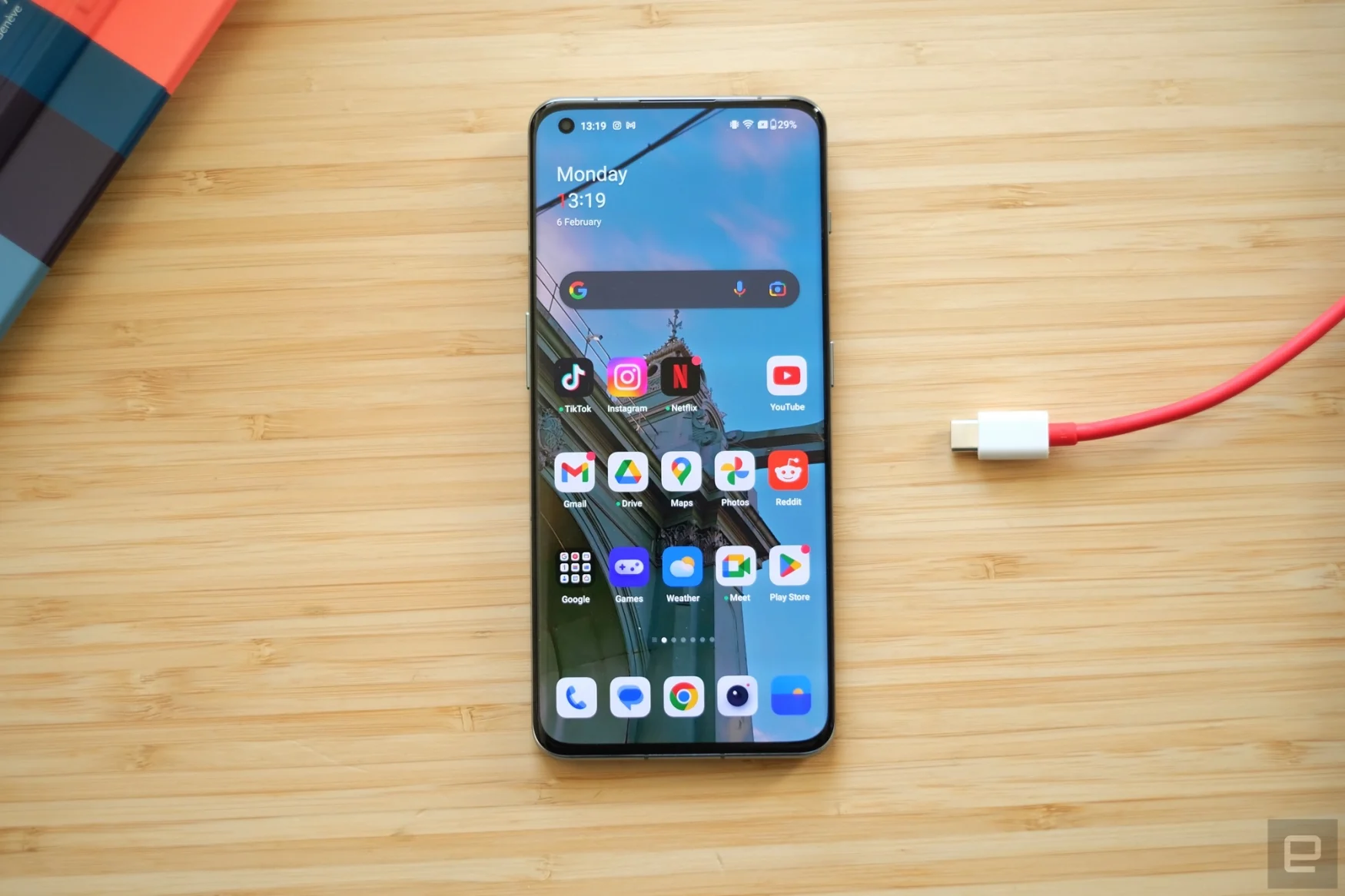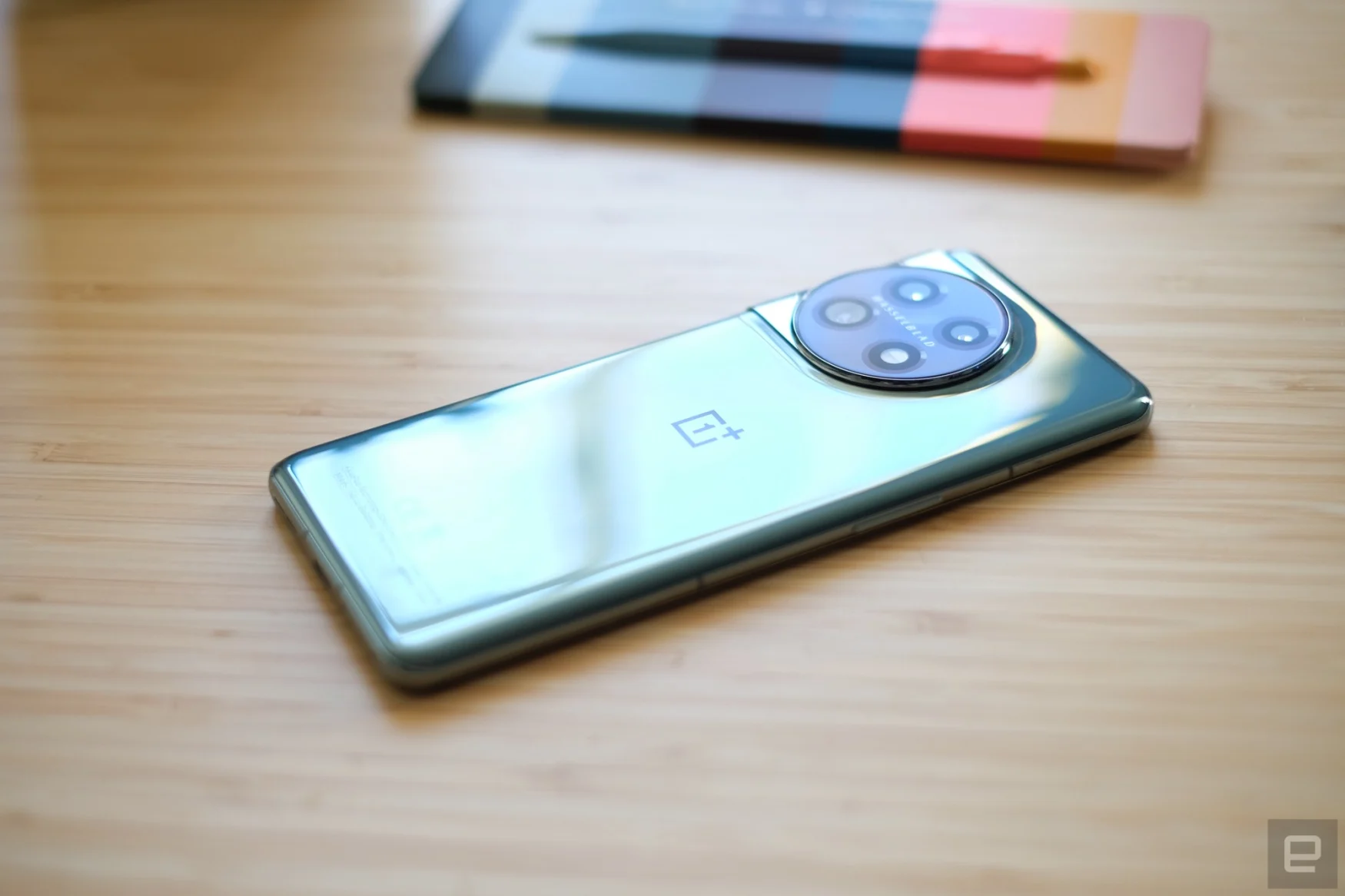OnePlus 11 review: A back-to-basics flagship phone
Last year’s OnePlus 10 Pro is set to be replaced by the OnePlus 11. There won’t be a OnePlus 11 Pro, and there wasn’t a regular OnePlus 10. Things could be more straightforward, but what are you going to do? Barring any spinoffs, this is OnePlus’ flagship phone, the focus of all its attention, development budget and everything else. Leaks meant we knew what the OnePlus 11 would look like long before it was officially unveiled. It has everything we loved about OnePlus in the past: a powerful, high-end processor, a vivid screen and (after a brief diversion) a competitive price tag ($699).
The OnePlus 11 launches the same week as a trio of phones from Samsung, the dominant Android phone player. The 2023 Galaxy S series has phones that are both bigger and smaller, pricier and cheaper, than OnePlus’ newest phone. Fortunately, this new flagship has one trick to stand out from Samsung’s new lineup: incredibly fast 100-watt charging.
Pros
- Gorgeous 120Hz 6.6-inch OLED screen
- Blazingly fast 100W charging
- Competitive price
- Great battery life
Cons
- A bit dull
Design

OnePlus has made some changes to the design. The company drew inspiration from sports cars (it has collaborated with McLaren in the past) and swiss watches. This apparently led to a unibody slab with a stainless steel camera array. There are some fine details in the camera glass which gives it a little bit of a watch aesthetic, but it’s basically just another giant camera pop-out. The metal bezel protrudes slightly more than the glass, which should help avoid scratches. Initially, I thought it was a little too big and ostentatious, but it’s roughly equivalent to the unit on the iPhone 14 Pro – and the Pixel 7 Pro’s Cyclops camera bar is arguably even flashier.
The OnePlus 11 also answered the pleas of the OnePlus faithful by reintroducing its Alert Slider. If you haven’t seen it on previous phones, it’s a metal slider just above the power button on the right edge that swaps between silent, ring and vibrate modes. OnePlus claimed in previous years that the removal was due to space demands inside the phones and that the slider would make a return, so the company has at least fulfilled that promise to its fans. For the rest of us, I’m not sure we need it. Then again, I’m the kind of person that keeps my phone on silent pretty much all the time.
The phone comes in glossy gray-green (Eternal Green) and sparkling black (Titan Black) color options. I thought the black finish would have a gritty, 3D-printed feel to it, but it’s closer to slate – somehow smooth and grippy at the same time. I don’t understand the physics of it either. Meanwhile, the green version is a lot like last year’s phones. The shiny finish is unfortunately a canvas for all your fingerprints and smudges.
The OnePlus 11 has a gorgeous 6.7-inch 2,048 × 1,080 OLED screen that can reach up to 120Hz refresh rates. Once again, there’s an LTPO panel that can now dip low at 1Hz when the always-on display (AOD) is on. OnePlus claims that, compared with typical 30Hz AODs, OnePlus 11’s 1Hz AOD consumes 30 percent less power. Of course, it’s not using much power to begin with as an AOD, but could lead to a little more battery life in the long run, even if it’s not represented in our typical battery rundown tests. Aside from the upgraded AOD capabilities, this screen is otherwise identical to the OnePlus 10 Pro – which isn’t a bad thing. It’s another area where OnePlus often goes toe-to-toe with the best smartphones out there, despite typically costing hundreds of dollars less.
Camera

The OnePlus 11’s primary camera is a new 50-megapixel sensor, with a f/1.8 aperture. It sounds similar to the OnePlus 10 Pro’s main camera, but uses a bigger 1/1.56-inch sensor. This works alongside a 115-degree ultrawide 48MP camera that pulls double-duty for macro shots.
This time, OnePlus’ flagship has a 32MP telephoto camera, up from a measly 8MP on its predecessor. However, optical zoom tops out at 2x, while the lower-res OnePlus 10 Pro could punch in at up to 3.2x optical zoom. It’s an unusual change to make. Which is the better solution? While I didn’t have last year’s OnePlus 10 Pro to compare directly with the OnePlus 11, the images didn’t seem as muted as I remember. Of course, they weren’t as magnified, but given the higher-resolution, I can always crop in without ruining the results too much. It’s pretty much a manual digital zoom, cropping like this, but you benefit from a better sensor before you crop away the excess megapixels.

The OnePlus 11’s camera array, what it calls its third-generation Hasselblad Camera, is improved, and still comes with some addictive filters for stills and video. However, It doesn’t quite reach the pinnacle of smartphone photography, led by the Galaxy S22 Ultra, iPhone 14 Pro and Pixel 7 Pro, though.
The OnePlus 11 seems to do its best work on landscape and street photography. There’s a Pro mode again, so you can dabble in RAW editing, but I was more than happy with the JPGs. The OnePlus 11 also features an AI Highlight video mode. The phone uses image processing to maintain even levels of exposure when recording video and shifting between areas of different lighting. I tested it out on a sunny afternoon, on a bridge, but I didn’t see too many tangible benefits to overexposure. It works a little better when you’re filming in a mostly dark situation, but, oddly, this is meant to be the standout software feature for this year’s OnePlus flagship – it’s not particularly remarkable.
Performance and battery life

The OnePlus 11 has the de facto top Android processor: the Qualcomm Snapdragon 8 Gen 2. It’s powerful, sure, but the bigger benefits might come through longer battery life. According to the chip maker, its new Adreno GPU can offer up to 45 percent better power efficiency.
OnePlus software doesn’t appear to have changed much since the OnePlus 10 Pro. OnePlus claims its HyperBoost Gaming Engine uses machine learning (and Qualcomm’s latest processor) to balance performance and battery drain. The caveat here is that it’s only compatible with major mobile titles like Genshin Impact. It’s also hard to tell whether it offers a discernible impact on games, when so many other phones are similarly specced and offer a similar experience.
The OnePlus phone series typically offers decent battery life. So it’s no surprise that the OnePlus 11 clocked almost 20 hours on our video rundown test. Although the battery icon seemed a little ‘sticky’ around 100 percent after playing video for a good two hours. The only phones that beat that are the company’s own OnePlus 10T and the iPhone 14 Pro.
While that’s great, the speed that OnePlus 11 can charge is even more impressive. 100W charging is here – the kind of wattage we get with laptops. There’s a compatible charger in the box, thankfully, but it’s proprietary tech, so you’ll need this specific charger, this cable and OnePlus’ latest phone to hit those heady charging speeds. OnePlus says it takes 25 minutes to reach a full charge from empty, and in practice, that’s been accurate.
The ability to plug my phone in for a brief stint (roughly ten minutes) and have it top up 50 percent is magical. However, there’s no wireless charging. It’s not a deal breaker for me but it’s definitely something to note as missing from a flagship phone. I’d take these heady charging speeds over wireless charging any day.
Wrap-up

The OnePlus 11 has a great screen (again), incredibly fast-charging (again) and cameras that are better than its predecessors. However, the supercharge speeds seem to be the only unique thing that the OnePlus 11 brings to the table. But is that enough to make you want to upgrade from an older phone, or choose a OnePlus over the competition?
At $699, with 8GB of memory and 128GB of storage, that’s $100 less than last year’s flagship. It’s a much better deal than its predecessor – and this could be a deciding factor. The OnePlus 11 sits between midrange devices, like the Pixel 6a, and premium phones including Google’s Pixel 7 and Samsung’s Galaxy S23 series. In many ways, you get the best of both, but against the dominance of other phone makers, it needs to do more to distinguish itself.

